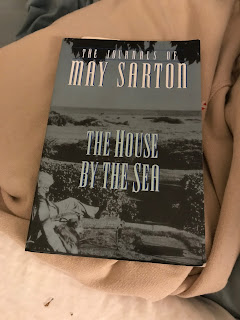Michelangelo was 15 when he began to study sculpture, 21 when he was commissioned to do the Pieta, and 29 when he sculpted the 17' high David. Up to this point, he had been a sculptor. In 1504, he and Leonardo da Vinci were hired by Florence to fresco opposing walls in the Palazzo della Signoria. The two artist did not like each other. Both artists created their cartoons (templates) for the fresco, but Michelangelo never started his fresco due to being called to Rome to work by Pope Julius to work on a sculpture for his tomb. Leonardo began his fresco using an experimental painting method that did not work. Hence, neither of these frescos exist.
After going to Rome to sculpt Julius's tomb and even ordering the marble, Michelangelo's task set by Julius was changed to work on the Sistine Chapel. Julius's uncle, Pope Sixtus IV, built the chapel in 1477. It is the chapel used for the papal conclave to elect a new pope. The building's proportions match the Temple of Solomon. In 1480, Lorenzo de Medici sent a team of painters, including Botticelli and Ghirlandaio, to Rome to fresco the walls of the Sistine Chapel. At this point, a fresco of blue sky with gold stars was painted on the vault. Due to unstable foundation soil, the building shifted causing cracks and gaps in the ceiling fresco. One of Pope Julius's projects was the repair and restoration of his uncle's chapel. He commanded Michelangelo to remove the old ceiling fresco and repaint it with scenes from the Bible. Michelangelo was not happy with this commission, because he considered himself a sculptor, not a painter. In fact, he was only known to have painted one work prior to this and had very little experience in the difficult medium of fresco. When he began work on the first scene, The Flood, he made an error that required that he scrap away over one month's work and start over. The area left after the scraping, which shows a group of people huddled under a tent, is the oldest part of the ceiling paintings.
For subject matter, Michelangelo chose Old Testament prophets and the ancestors of Christ for the spaces around the vault. Not all of the spaces were filled with Biblical subjects. There are some figures from pagan history. For the vault, he chose numerous Genesis scenes. His total work would encompass more than 150 separate paintings including more than 300 individual figures. The estimated number of preparatory drawings is over 1,000. Michelangelo was a follower of Savonarola, whose teachings of judgement and punishment influenced Michelangelo's choice of subject matter.
During the years that Michelangelo worked on the Sistine Chapel, he dealt with numerous outside stresses. Pope Julius spent most of the time warring against the French and other Italians. Michelangelo's family gave him no end of grief. His father had been disappointed, to say the least, with Michelangelo's choice of profession, but he had no qualms about living off the proceeds of his son's work. In fact, a couple of times, his father took money from Michelangelo's bank account without permission. As if these problems weren't distracting enough, a rival artist, whom Michelangelo did not like, was hired to fresco the pope's apartments in the Sistine Chapel while Michelangelo frescoed the ceiling. This artist, Raphael, was a beautiful, charming, extroverted ladies man, while Michelangelo was a misanthrope who rarely bathed. Michelangelo was so screwed up about women that he wouldn't even use women models. I find this strange, considering that he was so interested in verisimilitude that he dissected corpses to see how the body was made.
Michelangelo became much more comfortable and proficient in fresco as the work progressed, in fact, working free hand sometimes and working so fast he left bristles in some of the paint. There was a point when the ceiling was about half finished when the scaffolding was dismantled to be reinstalled under the remaining half. This was the first time that anyone, including Michelangelo, had been able to view the frescos from the floor. After this viewing, Michelangelo changed his technique to include fewer, but larger, figures. Once you know this, you can look at the ceiling and see exactly where this change occurred. Many fascinating facts remain, but I've got a plane waiting on me, so I'll have to finish later.



No comments:
Post a Comment